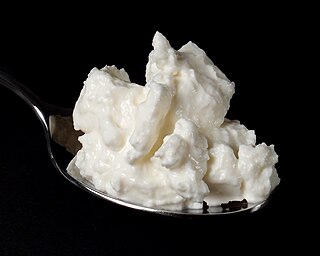 W
WAlexandertorte, also known as Alexander Torte or Aleksander Torte, is a dessert that was conceived to commemorate a visit of Tsar Alexander III in Riga, today's capital of Latvia.
 W
WChrain is a spicy paste made of grated horseradish. It is a common condiment for meat and fish dishes in Ashkenazi Jewish, Israeli, American Jewish, Argentine Jewish, Austrian, Canadian Jewish, Slovene, northern Croatian, Belarusian, Czech, German, Polish, Romanian, Latvian, Lithuanian, Russian and Ukrainian cuisine. Chrain comes from Yiddish כריין, which is in turn a loanword from Slavic languages.
 W
WHead cheese or brawn is a cold cut terrine or meat jelly, often made with flesh from the head of a calf or pig, typically set in aspic, that originated in Europe. Usually eaten cold or at room temperature, the dish is, despite the name, not a dairy cheese. The parts of the head used in the dish vary, though commonly do not include the brain, eyes and ears of the animal used. The tongue, and sometimes the feet and heart of the animal may be included; the dish is also made using the trimmings from more commonly eaten cuts of pork and veal, with the addition of gelatin to the stock in order to act as a binding agent. Head cheese may also be made without utilising the flesh from the head of an animal.
 W
WJāņi cheese is a Latvian sour milk cheese, traditionally eaten on Jāņi, the Latvian celebration of the summer solstice. Nowadays the cheese has also become one of the symbols of Latvian culture.
 W
WKvass is a traditional fermented Slavic and Baltic beverage commonly made from rye bread, which is known in many Central and Eastern European and Asian countries as "black bread". The colour of the bread used contributes to the colour of the resulting drink. Kvass is classified as a "non-alcoholic" drink by Ukrainian, Belarusian, Russian, Latvian, Lithuanian, Polish, Serbian, and Romanian standards, as the alcohol content from fermentation is typically low. It may be flavoured with fruits such as strawberries or raisins, or with herbs such as mint. Kvass is especially popular in Russia.
 W
WLingonberry jam is a staple food in Northern European cuisine and otherwise highly popular in Central and Eastern Europe. Lingonberries grow on a short evergreen shrub in the Arctic tundra throughout the Northern Hemisphere from Eurasia to North America.
 W
WLivonian cuisine consists of the cuisine of Livonia and the Livonians, and is characterized by the rich use of local foods. Livonians are a coastal people – since they acquire the bulk of their food from the sea, Livonian families have historically eaten a great deal of fish. The most preferred of these is European flounder, but many also consume herring (ēriņ), salted herring, and cod (tūrska).
 W
WAn open sandwich, also known as an open-face/open-faced sandwich, bread baser, bread platter or tartine, consists of a slice of bread or toast with one or more food items on top.
Pantāga is a traditional Latvian dish, containing eggs and spices. It symbolically represents the sun, often prepared at Easter. It is often baked on an open flame outdoor fireplace or fire, usually in a round cast iron long stem pan. The egg whites and yolks are beaten in a pan with spices, producing a form of scrambled egg. However, it is also common to place it in a microwave.
 W
WSpeķrauši, speķa rauši, speķa pīrāgi or speķa pīrādziņi, sometimes also colloquially called simply pīrāgi or pīrādziņi is an oblong or crescent-shaped baked Latvian bread roll or pastry, often containing a filling of finely chopped bacon cubes and onion. Speķrauši range from five to thirteen centimetres in length, depending on if they are intended as a snack or a more substantial meal. Smaller speķrauši are often prized for their daintiness and are considered the work of a skilled cook.
 W
WPotato pancakes, raggmunk, draniki, deruny, latkes or boxties are shallow-fried pancakes of grated or ground potato, matzo meal or flour and a binding ingredient such as egg or applesauce, often flavored with grated garlic or onion and seasoning. They may be topped with a variety of condiments, ranging from the savory, to the sweet, or they may be served plain. The dish is sometimes made from mashed potatoes to make pancake-shaped croquettes. Some variations may be made with sweet potatoes.
 W
WQuark or quarg is a type of fresh dairy product made by warming soured milk until the desired amount of curdling is met, and then straining it. It can be classified as fresh acid-set cheese. Traditional quark can be made without rennet, but in modern dairies small quantities of rennet are typically added. It is soft, white and unaged, and usually has no salt added. It is traditional in the cuisines of German-speaking, Dutch-speaking, Slavic, Scandinavian, and Baltic countries.
 W
WRupjmaize is a traditional dark bread made from rye and is considered to be the staple of the Latvian diet. The first written references to Latvian rye bread are found in a recipes book dating back to 1901.
 W
WSklandrausis (Livonian dialect: sklandrouš, from Curonian: sklanda – 'fence-post, wattle fence, slope, declivity'; Livonian: sūrkak, žograusis or dižrausis is a traditional Latvian dish of Livonian origin. It is a sweet pie, made of rye dough and filled with potato and carrot paste and caraway. In 2013 European Commission designated sklandrausis with a Traditional specialities guaranteed.
 W
WSolyanka is a thick, spicy and sour soup of Russian origin that is common in Russia, Ukraine, and other states of the former Soviet Union and certain parts of the former Eastern Bloc. It was one of the most popular dishes of the former East Germany.